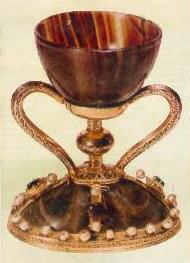
On this Feast of St. Lawrence this seems appropriate.
The Holy Grail might be in Valencia, Spain.
 There is an interesting book by Janice Bennett entitled St. Laurence and the Holy Grail: the story of the Holy Chalice of Valencia (Ignatius, 2004) which argues that the 1st century cup of agate, now mounted on a medieval base of gold and precious stones is the cup that Jesus used at the Last Supper for the consecration of His Most Precious Blood, “poured out for many for the forgiveness of sins.”
There is an interesting book by Janice Bennett entitled St. Laurence and the Holy Grail: the story of the Holy Chalice of Valencia (Ignatius, 2004) which argues that the 1st century cup of agate, now mounted on a medieval base of gold and precious stones is the cup that Jesus used at the Last Supper for the consecration of His Most Precious Blood, “poured out for many for the forgiveness of sins.”
For many, not for all… in the sense that not all will accept the gift.
Please understand that this book has big holes, uneven writing and research, and is open to serious skepticism on some aspects. However, it also relates truly fascinating information about this amazing relic held in Valencia and gives the reader a glimpse into the story of St. Lawrence and translations of various manuscripts of interest. Take this with a grain of salt, but it is a great read.
The cup itself is of a kind of agate, like chalcedony or sardonyx. It is like other cups found in Egypt, Syria and Palestine at the time of Christ. In the British Museum there are stone cups of the same style as that in Valencia dating to A.D. 1-50. It is of an odd color, reddish, “like a live coal”, and it is hard to say exactly what the stone is. The ancient naturalist Pliny describes that stone cups were submerged in oil until the stone absorbed some, and then boiled in acid which modified the organic material and changed the colors of the veins in the stone. The cup was very finely and accurately crafted and lacks ornament other than a fine band around the lip. It was broken in the middle on 3 April 1744, Good Friday, when it was dropped. I’ll bet that guy was reassigned! The break was repaired and only a tiny chip is missing. The cup can hold about 10 ounces.
You are asking, “But Father! But Father! How can anyone claim that this cup in Valencia came from the hands of Jesus in Jerusalem?”
The cup has an interesting story, traced by Bennett in her book. Here is the super brief version.
Some scholars argue that Christ used two different cups at the Last Supper, one of metal and the other of agate, the latter used for the first consecration. Some argue that the Upper Room used for the Last Supper belonged to the family of John Mark. There is some confusion about the different “John”s and “Mark”s in the New Testament. Suffice to say that it is possible that Mark the Evangelist was the son of the women who was a prominent member of the first Christians in Jerusalem. Peter went to her house when he was released from prison. That house was a meeting-place for the brethren, “many” of whom were praying for Peter when he was in prison: (Acts 12:12-17). This is possible the same place where the Last Supper took place, which establishes a connection with Mark and with Peter. It is argued that Mark gave Peter the cup Jesus used at the Last Supper for the consecration of his Precious Blood. This would be the second cup Jesus handled that night.
St. Peter consequently took the cup with his to Rome, where the Prince of the Apostles used it for Holy Mass until his martyrdom under the Emperor Nero. Thus, this cup became a precious object within the Christian community in Rome.
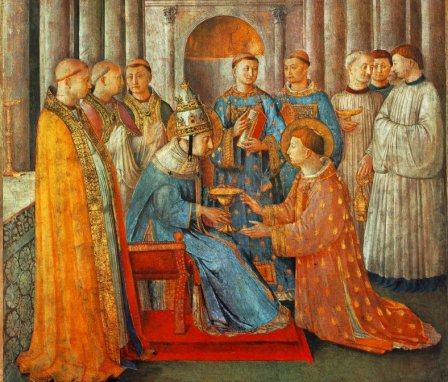
Sixtus II ordaining Lawrence to the exclusively all male diaconate
Bennett relates the argument that the presence of and even use of this cup in the ancient Roman Church is proposed as a possible reason why in the Latin Rite our consecration formula speaks of “hunc praeclarum calicem… this precious chalice” whereas the non Latin rites refer to the Greek “to poterion… the cup”. Interestingly, in the New Testament the word used is poterion, “cup”, and in Latin it is calix. However, in Spanish the word caliz (in Italian calice) is used to distinguish this important vessel for Mass from a simple cup, or copa (Italian coppa). “Cup” is simply not worthy of the moment and the purpose. Where do the words involved here come from? A Greek kylix was ceramic and had a wide base, was shallow, and had handles parallel to the table along the wide open lip. This style also came to be made from precious metals. The Romans called this cup a calyx. The word “grail” probably derives from old Spanish gral, grail for a drinking vessel, perhaps coming from Latin gradale or grasale a wide dish. In Provençal, the language of many of the troubadors who spread the grail legends, we have grazal.
During the time of the Emperor Valerian there was a terrible persecution of Christians. In A.D. 258 Pope Sixtus II was commanded to turn over the goods of the Church and, when he refused, was killed. Sixtus, however, had entrusted to his deacon the goods of the Church for their administration. This deacon was the famous St. Lawrence, a Spaniard from Huesca. When the Emperor went after Lawrence and commanded that the goods of the Church be rendered up. Lawrence asked for three days to get everything together. But instead of giving it to the officials he gave everything away and then produced a group of poor people, saying “These are the true treasures of the Church”. For that Lawrence was beaten and tortured horribly, even to being fried alive on an iron grate. For his part, however, Lawrence had already given the precious stone cup to another Spaniard named Precelius, who took it to Spain. The iron grid of Lawrence’s martydom is preserved in a Roman Church just a few minutes from where I am writing, in San Lorenzo in Lucina though he was martyred where there now stands San Lorenzo in Panisperna and buried at San Lorenzo fuori le mura, a Minor Patriarchal Basilica.
Lawrence is obviously the patron saint of cooks as well as several other groups. [cooks!]

Perceval
This is where the history firms up a bit. Various manuscripts indicated that the stone cup was kept in several places. By 533 it was in the Cathedral of Huesca, which was built in that year. Huesca was where St. Lawrence was from and perhaps where the Spaniard Precelius took it. After the 711 invasion by the Moslems it was hidden in the Pyrenees in various caves. After Charlemagne’s journey to the area in 777, the location of the cup, which was hidden, roused up many of the “grail legends” that come down to us in many forms today. In 830 the cup is at the Monastery of San Pedro de Siresa. In 1071 it was taken to the monastery of San Juan de la Peña. In 1190 Cretien de Troyes wrote a 9324 line poem Perceval about the “Holy Grail”. In 1209 Wolfram von Eschenbach wrote Parcival, based on Spanish legends, which centuries later inspired Richard Wagner’s opera. In 1322 a Sultan sells a gold cup from Jerusalem, which he claims is the cup of the Last Supper, to Jaime II, King of Valencia and Aragon. This is perhaps the cup which is converted to become the base for the ancient stone cup. In 1399 the stone cup was given to King Martin the Humane and taken to Barcelona. King Alfonso V of Aragon sends the cup to Valencia. In 1744, the cup is broken, repaired and fixed to its base. In 1936, to save it from the Marxists, a woman named Maria Sabina Suey smuggled the cup out of the Cathedral wrapped in newspaper. She hid it in various places to keep it from desecration and destruction. The cup returns to the Cathedral of Valencia in 1939 with the end of the war where it remains to this day.
Even if this is not the very cup Jesus used at the Last Supper, and it might well be, it is hard to dismiss that this is the cup that inspired all the Holy Grail legends which branch into the stories of the Knights of the Round Table, an Indian Jones movie, and another recent piece of rubbish not worth our time to name.
 The ancient stone cup, on its golden medieval base, is now in a beautiful chapel in Valencia. When Pope John Paul II visited Valencia on 8 November 1982, he kissed the cup (better than kissing a Koran) and then used it to celebrate Holy Mass.
The ancient stone cup, on its golden medieval base, is now in a beautiful chapel in Valencia. When Pope John Paul II visited Valencia on 8 November 1982, he kissed the cup (better than kissing a Koran) and then used it to celebrate Holy Mass.
It might have been the first time, 1724 after Pope Sixtus II, that “Peter” had held the cup again.
Pope Benedict used it for Mass in Valencia.
It could really be it, after all.
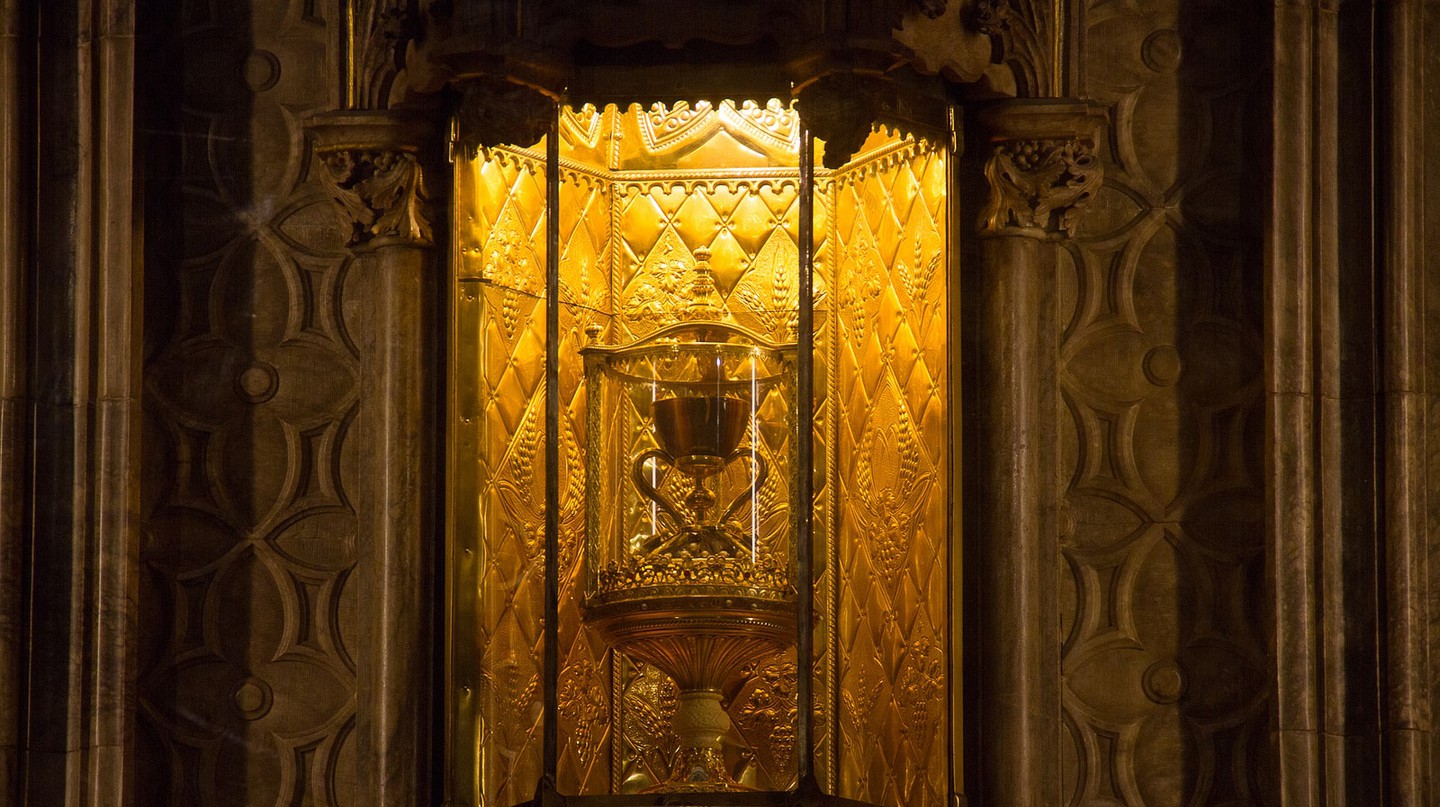
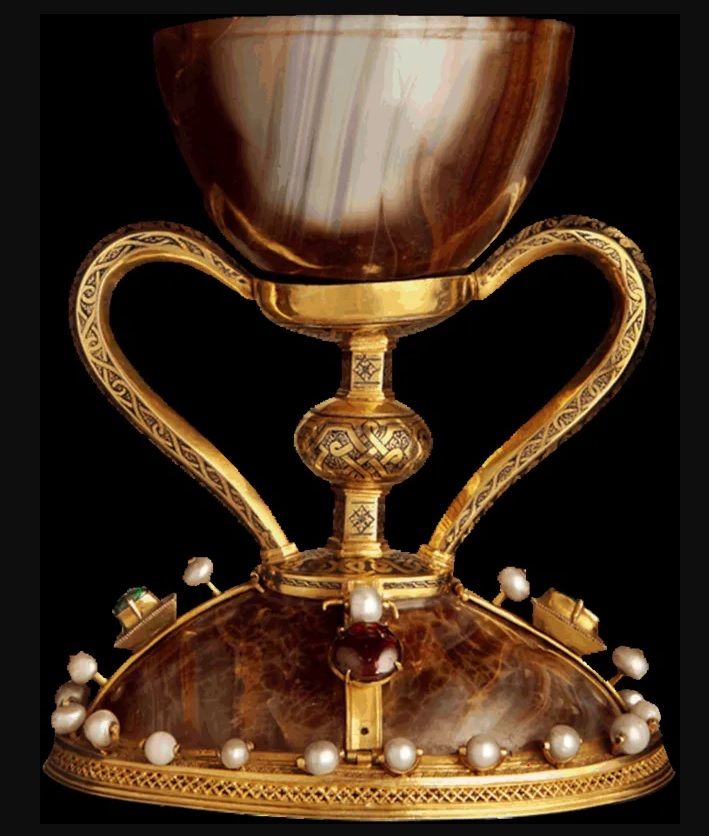
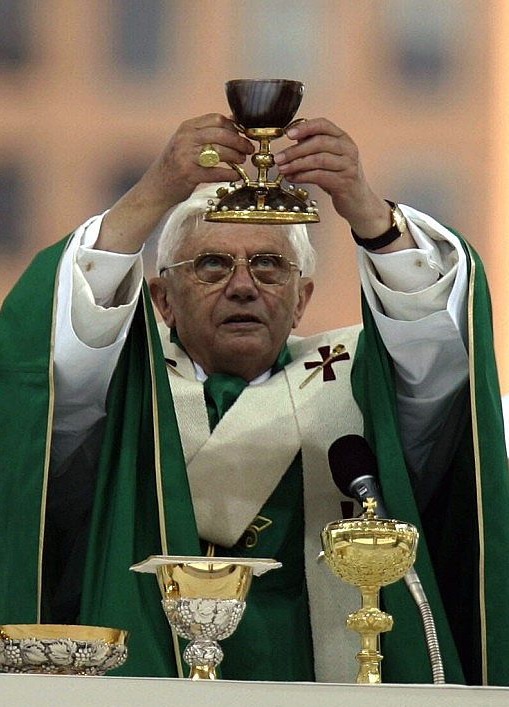


































I live near Valencia. There are lots of books and doctoral thesis about this chalice. One can never be sure, obviously, but has lots of points in it’s favour.
Pingback: It might be the real Holy Grail | Fr. Z’s Blog – The Old Roman
Too big, too flashy.
BTW, is it Hollyweird mythology, or are there special graces that would go with drinking from the Grail?
The fact that the cup is made of stone (and not metal, for instance) is a major point. Stone was favored for drinking vessels among Jews in the Second Temple period (before the destuction of Herod’s Temple in 70 AD), because stone vessels, due to a loophole in Mosaic Law, did not need to be purified like metalware or earthenware did. In fact, archaeologists often determine whether a given settlement in the Middle East was majority Jewish or not based on whether the artifacts were made of stone or some other material.
The dude who broke it. Haunting me.
That is one of my all-time favorite books, and I got it out of the bookcase today for this Feast of St. Lawrence. One of these days I will re-read it. My middle name is Lawrence, so I have a special connection with this great saint. I highly recommend the book to anyone interested in the “quest for the Holy Grail”… the cup of Valencia looks to me like a strong contender!
It was evacuated to Mallorca to keep it out f the hands of Napoleon et suis – it would have been interesting if Patrick O’Brian had written a novel about this… (I wonder if anyone else has?).
One of the places it was hidden from the Marxists was in a wardrobe (might C.S.Lewis have heard about this?).
Michael Hesemann has also written an interesting-looking book about it, but so far as I know it has not (yet?) been translated into English (Die Entdeckung des Heiligen Grals).
Pingback: VVEDNESDAY EDITION – Big Pulpit
When searching for the Holy Grail, just beware of the Knights who say Nee. They’re easily recognized by their fascination with shrubbery.
What? C’mon, somebody had to throw in a lame monty python joke. And now, for something completely different.
If true, then Monty Python’s quest was in vain!
Stone drinking vessels are, indeed, an important feature of Second Temple era Jewish life. Jews interpreted Leviticus 11:33 and following as teaching that stone wear vessels did not convey ritual impurity. Therefore, there was widespread use of stone wear vessels by Jews in Judah and Galilee during this period.
This understanding is witnessed in the New Testament in John 2:6, the Wedding Feast in Cana. The Jewish wedding party was using large stone water pots to store the water needed for the feast. Jesus used these stone vessels to answer his mother’s petition and conduct his first public miracle.
Several archeological sites have been uncovered, recently in Israel of Second Temple era stone wear factories.
A very interesting post and comments. It seems there is more provenance, in the form of history and legends, to link this chalice with the Last Supper than there is for the stories connected to some venerated relics. This chalice just might be the one used at the Last Supper, but we’ll never know for sure, I suppose. If I ever get to Heaven, I hope that we shall have access to all knowledge and I’ll then know.
It is curious that the 2006 BBC “Richard Hammond and the Holy Grail” has a 12-second zoom out of the Valencia Chalice in the painting of the Last Supper by Juan de Jaunes (in the Prado) in the first minute-and-a-half – but never mentions the Valencia Chalice in the whole rest of the show (!)
The most convincing evidence that it is the true Holy Grail is when and where it was found. There was no possibility of consulting with an archeologist as to the most authentic style of cup used in Judea in the first century. Archeology would not be invented until the 19th century. Nor was historical accuracy the concern of artists and craftsmen; people depicted ancient events in the style of their own culture and century.
The fact that the cup is historically correct for the time and place of its origin could not have been known in 8th century medieval Spain. It could not have been faked correctly, even if someone of that time had wanted to do so.
Thank you for this beautiful and informative post. Whether or not this is the true chalice (and there seems at least to be a good case that it is, not the least of which is the almost miraculous preservation of this object through many persecutions) the reverence for it and great sacrifice of those who believed it to be so are a great examples of true piety and faith I find both awe inspiring and comforting. And a sobering reminder of what we may be called upon to do in the not so distance future in order to protect the sacred objects and relics of our Holy Mother Church.
Thanks for the interesting post and comments.
Well, Spain puts a plot twist on Monty Python and the Holy Grail. Britain provided (though the detestable Karl Marx skulking about London is a big strike) the Venerable Bede, Alfred the Great, Winston Churchill, Margaret Thatcher, Roger Scruton and Bertie Wooster, so it’s probably Spain’s turn.
I attended Holy Thursday Mass in the cathedral in Valencia a number of years ago, and the Grail was on the altar for the Mass, and although I do not recall clearly, I seem to remember it actually being used by the archbishop as the chalice for the consecration of the Precious Blood.
The Benedictine monks of the monastery of San Salvador de Leyre here in Navarre, where the relics of Sts. Nunilo and Alodia are kept, have an exact replica of the Grail. It was gifted to them some years ago by a gentleman from Valencia who makes an annual retreat there. They also use the replica for Holy Thursday Mass at the monastery, which I normally attend. A few years ago, I was chatting with the abbot in the sacristy afterwards and he showed it to me. I got to hold it. Although I knew it was only a replica, it was very moving to see it close and hold it in my hands. The base of the cup is neither large nor particularly flashy, and together with the stone cup to which it is affixed, is actually quite small.